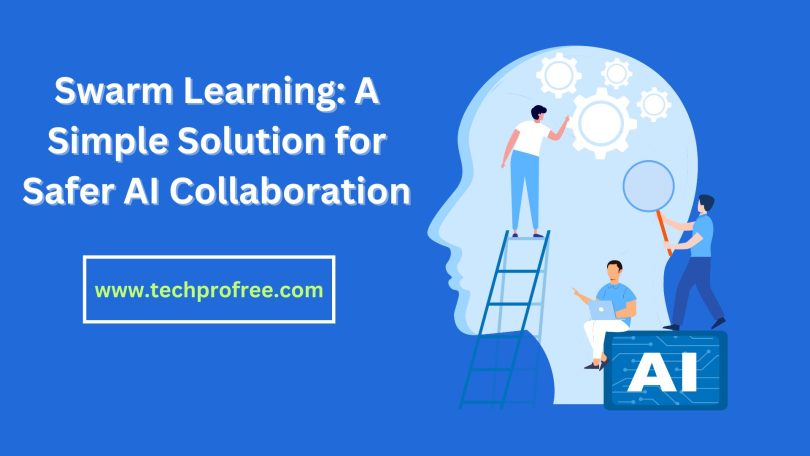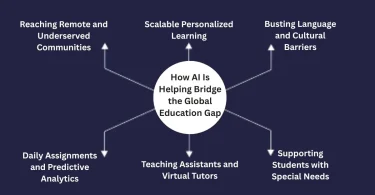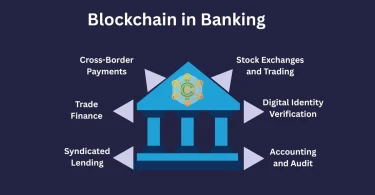How will swarm learning improve AI collaboration without compromising data security?
Swarm learning, a creative method for AI collaboration, enables dispersed learning from diverse data sources without disclosing or centralizing the data. It is based on the concept of swarm intelligence, where a number of individuals can do complex tasks by following basic guidelines and interacting with those around them.
We’ll discuss how swarm learning works, its benefits and drawbacks, and how it can enhance AI collaboration while preserving data privacy in the following article.
Unlocking the Power of Swarm Learning: A Deep Dive.
To learn from one another without disclosing the real data, swarm learning uses a decentralized system of nodes, each of which has its own data and AI model. These nodes communicate with one another via a blockchain-based protocol, which promotes consensus, trust and security. This protocol enables nodes to compare their performance, exchange encrypted model updates and determine which model to use. Furthermore, nodes have the capability to form dynamic groups based on their objectives, interests, or hobbies and earn knowledge from the groups that are most suitable to them.
Fundamentally, swarm learning is comparable to a democratic learning system in which each AI model or node performs the role of a participant.
They exchange their knowledge (using encrypted model updates) while keeping their personal information confidential. Imagine a global brainstorming session where everyone’s ideas are valued and no one is required to provide any personal information. An appropriate real-world comparison would be a group of people working together to piece together a difficult crossword puzzle; each person contributes their piece without disclosing the image they are holding.
The Benefits/Advantages of Swarm Learning:
For AI cooperation, swarm learning offers a number of advantages, such as the protection of data privacy and sovereignty, decreased bandwidth and storage requirements and improved diversity and learning quality. It also provides flexibility to dynamic and diverse environments. As only minor model updates are shared, the data never leaves the nodes, making this feasible.
The nodes are free to join or leave the swarm at any time and they even have access to collective intelligence.
Swarm learning promotes global collaboration without centralized management, which is especially helpful in industries like healthcare where data protection is of the utmost importance. Think of it as bees adding to the intelligence of the hive; each bee (or data node) collects nectar (data) on its own and then shares findings with the hive (swarm). By including a variety of experiences, enhances overall learning quality while restricting data transfer to relevant knowledge and resolving storage and bandwidth issues.
Challenges or Problems with Swarm Learning:
The need for a robust and secure blockchain infrastructure, which can be both expensive and complex, is one of the distinctive challenges that swarm learning provides for AI collaboration.
Incentives, resources and network conditions are just a few instances of the factors that influence node availability and participation.
Swarm learning also needs to balance accuracy and privacy while taking into account moral and legal issues like responsibility, justice and openness in the process and results.
Swarm Learning Deployment: A Step-by-Step Guide:
- Swarm learning must be implemented after defining the project’s problem and goals, and finding appropriate data sources, and AI models.
- The blockchain network and swarm learning protocol have to be established, along with guidelines and standards for node interaction, evaluation and selection.
- The swarm learning procedure must then be launched by deploying nodes and models onto the data sources.
- Lastly, parameters or models should be consistently observed, assessed and modified when needed.
Examples of Swarm Learning Applications and Use Cases:
Swarm learning can be used in a wide range of fields and situations, such as healthcare, manufacturing and education.
In healthcare, it facilitates collaboration among healthcare providers in AI diagnosis, treatment or research; all while safeguarding patient data. In manufacturing, it helps to improve production processes, maintain optimum quality and manage maintenance by using data from various machines, plants, or suppliers for optimization.
In education, educators can personalize their teaching methods, content and assessments while drawing insights from the data of diverse students, schools or regions.
The Future Potential of Swarm Learning in Advancing AI Collaboration:
Swarm learning offers a creative and new way to improve AI cooperation while preserving data privacy. While preserving the rights and interests of data owners, it has the potential to foster advanced forms of communal intelligence, creativity and problem-solving. However, in order to get over its social, ethical and technical obstacles; further study, development and regulation will be required. Swarm learning is a technique that can facilitate and improve AI collaboration rather than being a one-size-fits-all solution.
Conclusion:
In a nutshell, Swarm Learning offers a straightforward yet powerful approach to AI collaboration while prioritizing data security. By fostering a decentralized network of nodes, preserving privacy and promoting collective intelligence, Swarm Learning presents a promising path for future AI advancements. Though challenges are present, continuous exploration and regulation can direct to more effective and secure partnerships. In essence, Swarm Learning isn’t a one-size-fits-all solution, but rather a vital tool in the ever-evolving landscape of AI collaboration.




Leave a Comment